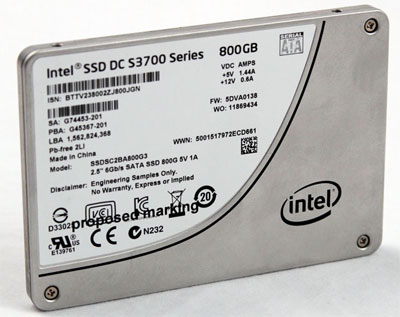Cache to speed

Over the past decade, servers, along with other computer equipment, have capitalized on power. No one is surprised by dozens of processor cores and hundreds of gigabytes of RAM in one case - even the heaviest applications “spin” on such hardware easily and naturally. However, as with any complex system, servers have weaknesses that do not allow them to squeeze the most out of the platform as a whole. In modern server management, such a weak link is often the storage subsystem. One solution to this problem is to use Intel Cache Acceleration Software to speed up disk operations.
 As the name implies, Intel Cache Acceleration Software (Intel CAS) is a software product that manages data caching. Similar Intel-made software exists for regular desktops; It is called Smart Response . However, the server components work completely in different conditions and on a different hardware; their requirements are also much more stringent. Combining with the appropriate functionality of the operating system, Intel CAS equips a multi-level caching system that uses both main memory and fast solid state drives (SSD). This creates a transparent, application-free cache that reduces latency when accessing data. CAS software itself chooses the optimal data caching strategy for a particular load, as a result of which the system works faster than if it were located entirely on the SSD .
As the name implies, Intel Cache Acceleration Software (Intel CAS) is a software product that manages data caching. Similar Intel-made software exists for regular desktops; It is called Smart Response . However, the server components work completely in different conditions and on a different hardware; their requirements are also much more stringent. Combining with the appropriate functionality of the operating system, Intel CAS equips a multi-level caching system that uses both main memory and fast solid state drives (SSD). This creates a transparent, application-free cache that reduces latency when accessing data. CAS software itself chooses the optimal data caching strategy for a particular load, as a result of which the system works faster than if it were located entirely on the SSD .The main storage can be any: local SATA / SAS RAID, external or network - SAN, iSCSI, Fiber Channel and so on. Moreover, the cache SSDs themselves can also be located remotely if the network access to them provides sufficient data transfer speed.
Intel CAS can be used to accelerate both physical and virtual systems, or rather, the applications installed on them. Which ones? In principle, all those who actively work with the file system are accelerated most effectively: the database server, mail and web servers, and the business application server. A feature of Intel CAS is the ability to fine-tune the caching process down to the application and file levels, and in some cases even deeper — for example, in the case of a SQL server, you can even operate with separate tables.
')

Intel CAS software and hardware requirements:
- The operating system is Microsoft Windows Server 2008 R2, Red Hat Enterprise Linux 5/6, CentOS 5/6, SUSE Linux Enterprise Server 11 SP1;
- Virtualization environment - Vmware, Windows Hyper-V, KVM, Citrix XenSever;
- Solid State Drive - SSD class Data Center, such as the Intel DC S3700 series or the Intel SSD 910 series.
The use of Intel CAS allows you to take a fresh look at the capabilities of your existing server park, because if the server has become more efficient in coping with one task, it can be charged with another without sacrificing performance. This saves units in a rack, power, maintenance, and so on — all because of Intel Cache Acceleration Software that speeds up work with disks.
You can get a 30-day evaluation version by filling out a form on the Intel website .
Source: https://habr.com/ru/post/182190/
All Articles